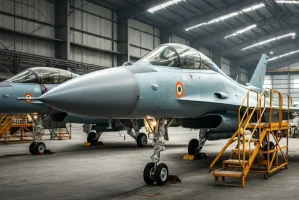
The Indian defence budget has undergone significant transformation since 2020, driven by heightened border tensions, particularly the 2020 Galwan Valley clash with China, along with a push for self-reliance in defence manufacturing under the "Atmanirbhar Bharat" (Self-Reliant India) initiative.
India's defence spending has consistently risen, reaching Rs 5.94 trillion in 2023 and projected to exceed Rs 6 trillion in 2024. This upward trajectory reflects the nation's commitment to strengthening its military capabilities in response to evolving security challenges.
Key Spending Priorities
- Modernization and Equipment: A significant portion of the budget is allocated towards procuring advanced weaponry, aircraft, naval vessels, and cyber capabilities. This reflects an urgency to upgrade outdated equipment and enhance combat readiness. The capital outlay for these acquisitions rose from Rs 1.35 trillion in 2021 to Rs 1.62 trillion in 2023.
- Personnel Costs: Increased allocations for salaries, pensions, and benefits are aimed at maintaining the morale and operational effectiveness of the armed forces. This includes the implementation of the One Rank One Pension (OROP) scheme.
Relative Reductions in Spending
- Research and Development: While the budget for defence R&D has seen some increase, it has not kept pace with overall defence spending. This indicates a potential prioritization of immediate procurement needs over long-term investments in technological innovation.
- Maintenance and Infrastructure: Spending on maintaining existing bases, equipment, and facilities has seen only marginal growth compared to other areas. This could be a concern for the long-term sustainability of India's defence infrastructure.
Open-Source Insights
Open-source information reveals that the shift in defence spending reflects a broader geopolitical strategy. The emphasis on modernization aligns with India's ambition to become a major regional power, while the "Make in India" initiative seeks to reduce reliance on foreign suppliers and boost domestic defence manufacturing.However, analysts caution that the relative neglect of research and development could hamper India's ability to indigenously develop cutting-edge defence technologies in the long run. The sustainability of the rising defence expenditure also raises concerns, especially given the economic challenges brought about by the COVID-19 pandemic.





